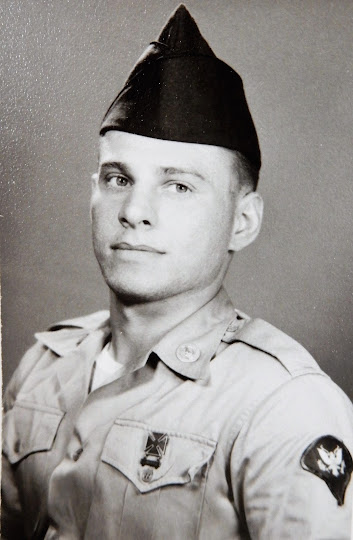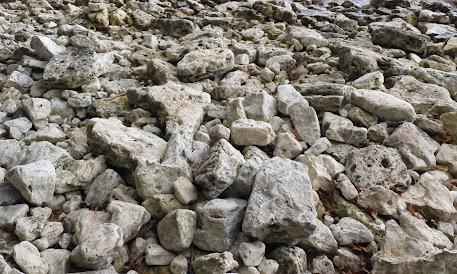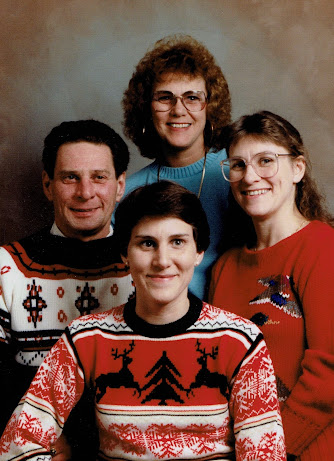Journey of our Journeys
Chapter 6 - Warmth One Winter
Dad worked in the maintenance department, so he wasn’t stuck with the swing
shift like many others. Instead, he clocked in from 7:30 a.m. to 4:00 p.m.,
Monday through Friday. He did have to take call, though, so he would go into
work in the middle of the night or on weekends if a piece of machinery needed
emergency care.
This also meant that if needed, he would travel across the country to one of
the other mills owned by Owens-Illinois.
Years before I was a twinkle in his eye, my father worked for an extended
period of time at the Valdosta, Georgia, mill. Mom, Tom, and Judy went with
him, living in company housing and dealing with the joys of submitting their
northern-born bodies to the hot, humid, bug- and snake-infested south.
Near the end of October 1967, Dad and some of the guys from his crew were
needed at the mill in Orange, Texas. What a paper mill was doing there, along
the Gulf of Mexico, was a mystery to me – and still is. Isn’t Texas a state
known for ranches and wide-open spaces? Where do the trees that are needed to
make paper come from?
In any event, Dad took the camper to Texas with Tom Allory, Red Wurl, and a few
others. When they got to Portage, Wisconsin, Dad took a wrong turn. Instead of
crossing the Wisconsin River at the new Highway 51 bridge, he took the Merrimac
ferry. Although there are 1,200 miles of dry land between home and Orange, we
would always mention how Dad took the ferry there.
At some point during his absence, Mom packed up Pat, me, a lady named Mrs.
Lane, and two young men in the military and drove to Texas for a few weeks. For
some reason, we left at four o’clock in the morning. It was pitch black outside
and freezing cold that November.
We arrived in Texas the next day to a warmth we never dreamed of in November.
We were amazed that we could go outside without jackets or scarves. The motel
where we stayed had an outdoor pool, which was still in use. Of course, Mom
wouldn’t let us use it, but no decent mother of the time would let their
children go swimming outdoors in November, no matter what the weather or where
you were.
Our jaunt to the Gulf of Mexico was rather chilly, more seasonable for us, with
a stiff breeze coming off the ocean. Mom made us wear our jackets and scarves.
Our plaid cotton scarves, with fringes, were almost extensions of ourselves, to
be worn at all times unless the weather was extreme. Extreme cold was what we
had left behind in Wisconsin that November, requiring a home-knit cap pulled
down around our ears. Extreme heat was the month of July, those four weeks
during the Wisconsin summer when the temperature consistently stayed above 45
degrees.
Two of the souvenirs we brought home were silky scarves with a picture of the
Lone Star State printed on them. Pat’s had blue trim, mine red. Mine is still
at the bottom of one of my dresser drawers, threadbare and wrinkled, but still
bearing the Texas logo.
The other item I remember Mom purchasing was a play cowboy whip for my
16-year-old cousin. I cannot fathom why she thought that was an appropriate
gift. As soon as she gave it to him, he chased Pat and me around my aunt’s yard
with it.
Free souvenirs are sometimes the best. Dozens of seashells found their way into
the camper only after Mom had inspected them to ensure no animals were lurking
inside.
“You know that animals do live inside those shells, don’t you?”
“Yes, Mom,” we obediently answered and immediately thought, “Wouldn’t it be
cool if one of those animals made it all the way home before crawling out when
we took the shell to school for show-and-tell?”
We really wanted to take the jellyfish to school. We found one washed up on the
beach, its long transparent tentacles trailing into the ocean. It was
positively unearthly.
“Get away from that thing,” Mom shouted before we could get within ten yards.
“That thing is poisonous.”
“But Mom, it’s dead.”
“It doesn’t matter. It is still poisonous and can still sting you.”
So much for extraordinary wildlife.
Dad packed us up in early December, and we headed home together in the camper,
stopping at the Astrodome on the way. It was the eighth wonder of the world at
the time, a mechanical feat of engineering ingenuity. Opened in April 1965, it
was still new when we visited it two years later. And for many years, it was
one of a kind—a structure to rival the pyramids of Giza. Even the Astroturf was
awe-inspiring. Over the last twenty years or so, the space had become archaic and fell into disrepair.
The only thing good about returning home to the frozen tundra was that I got to
show off all sorts of neat stuff to my kindergarten class.

.JPG)




.JPG)
.JPG)